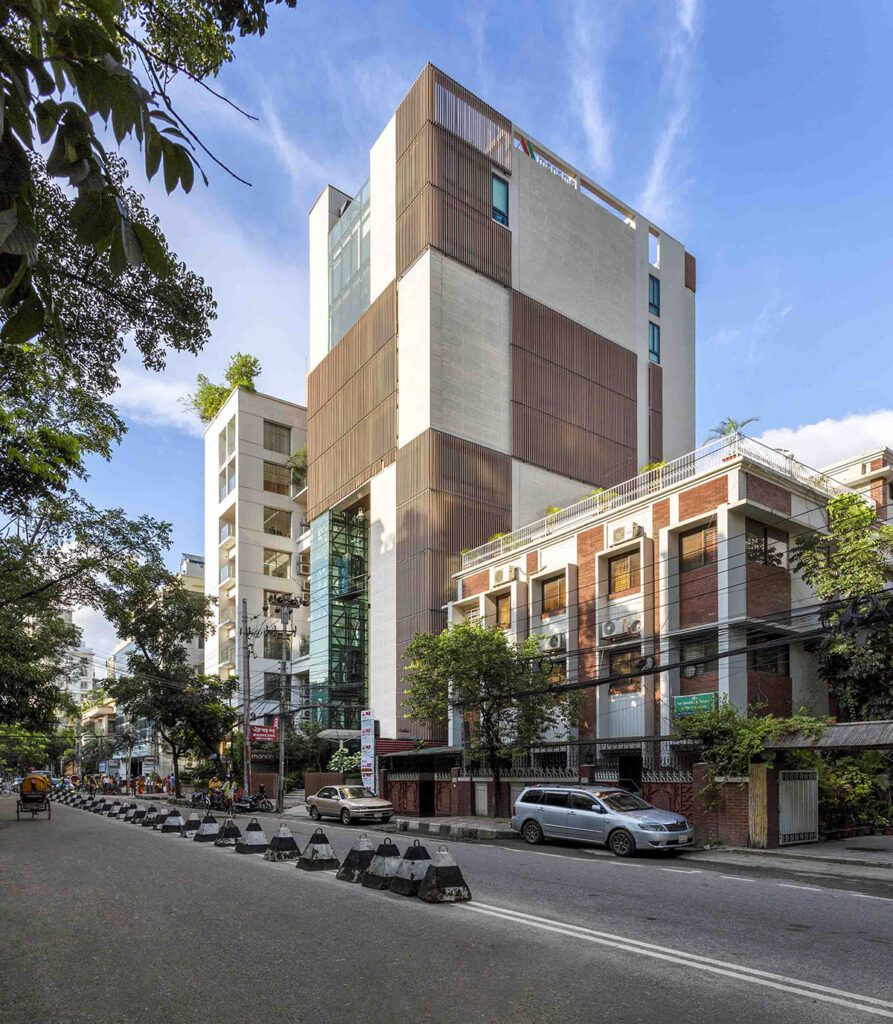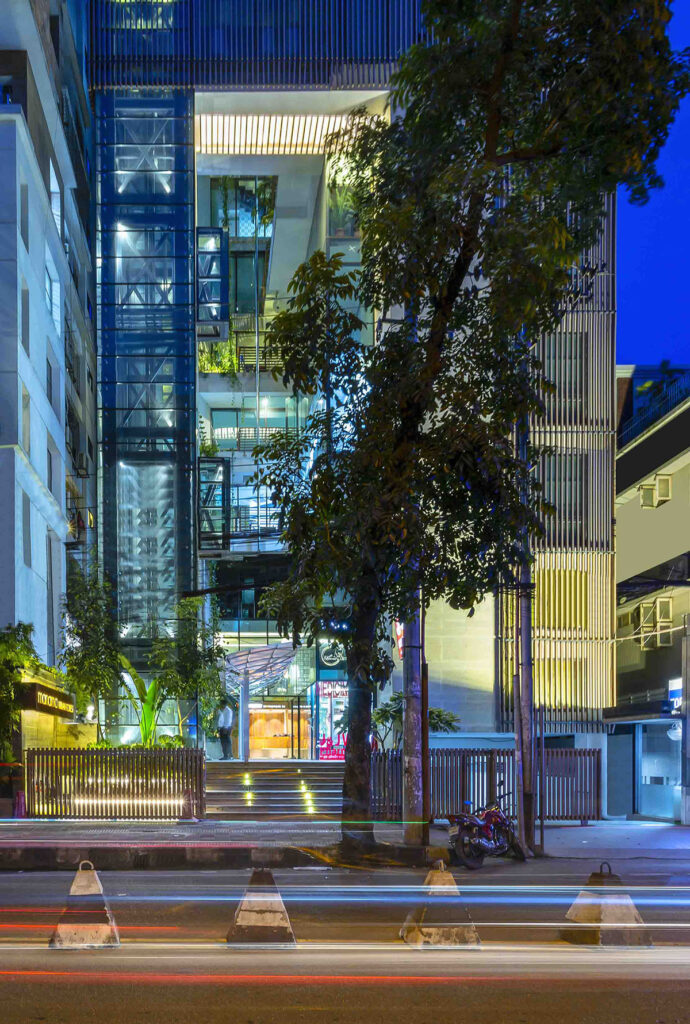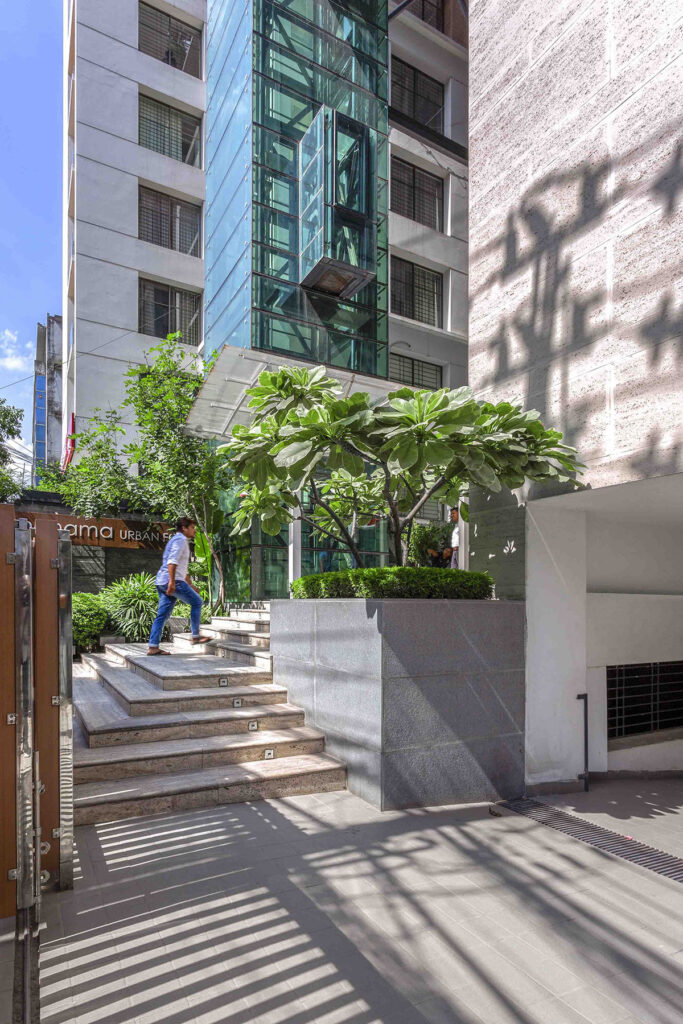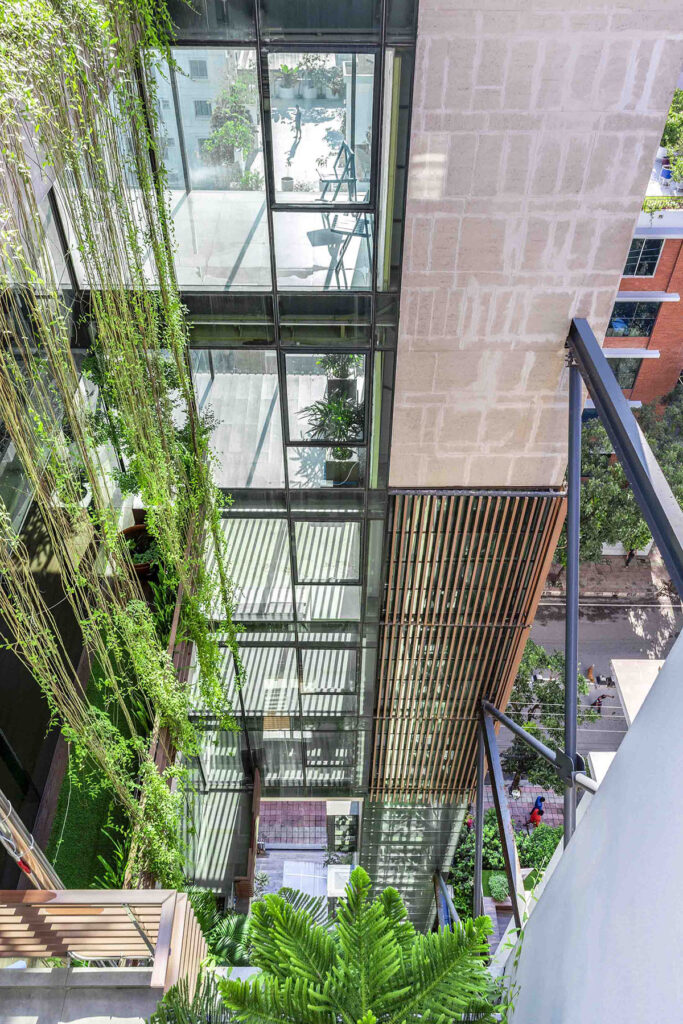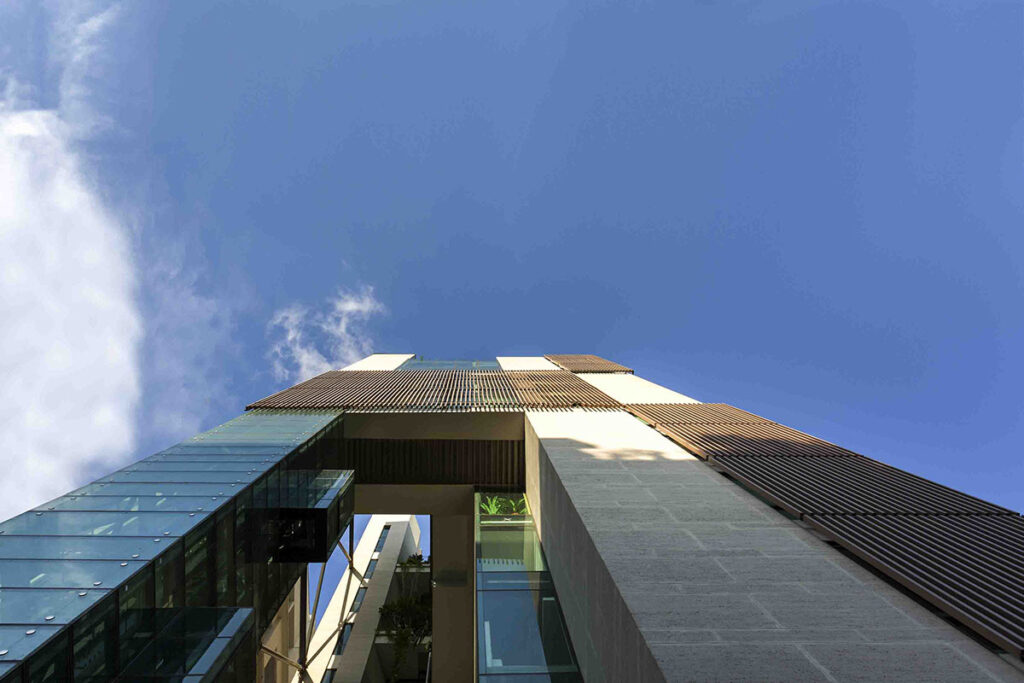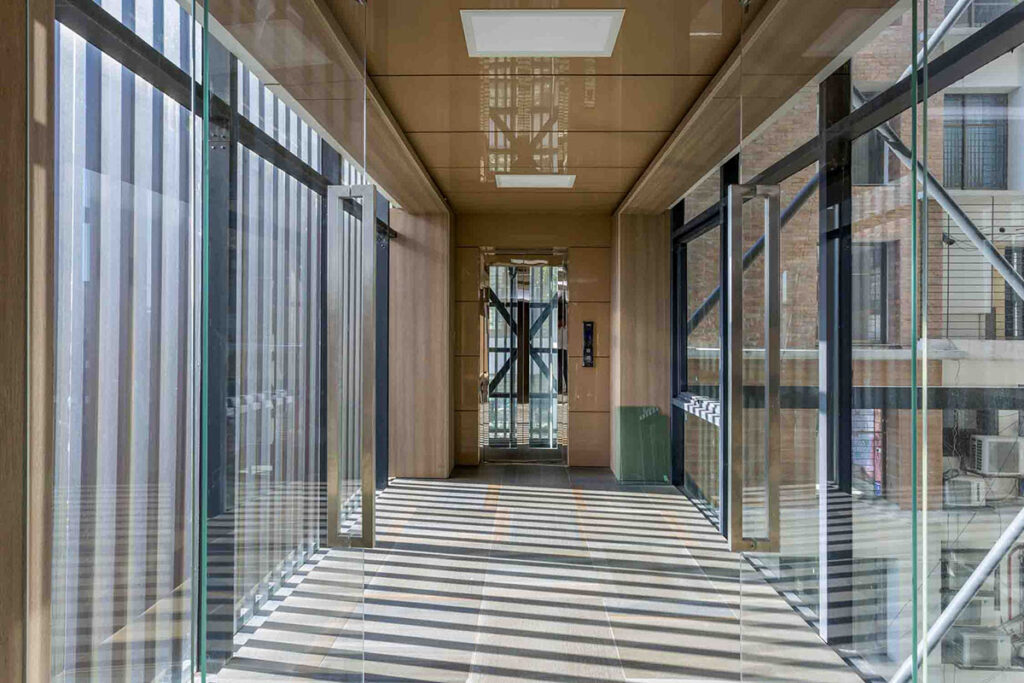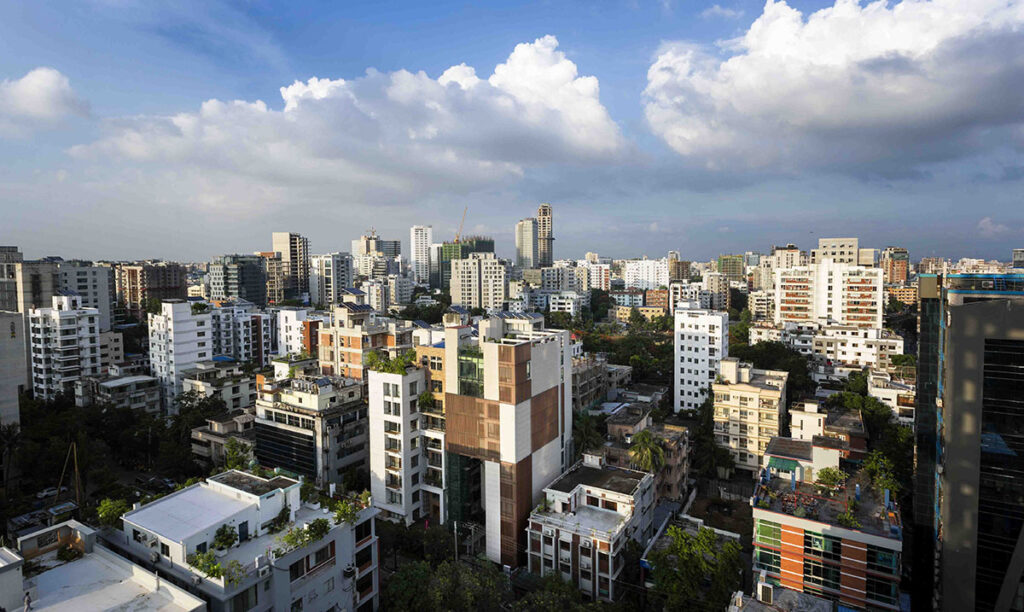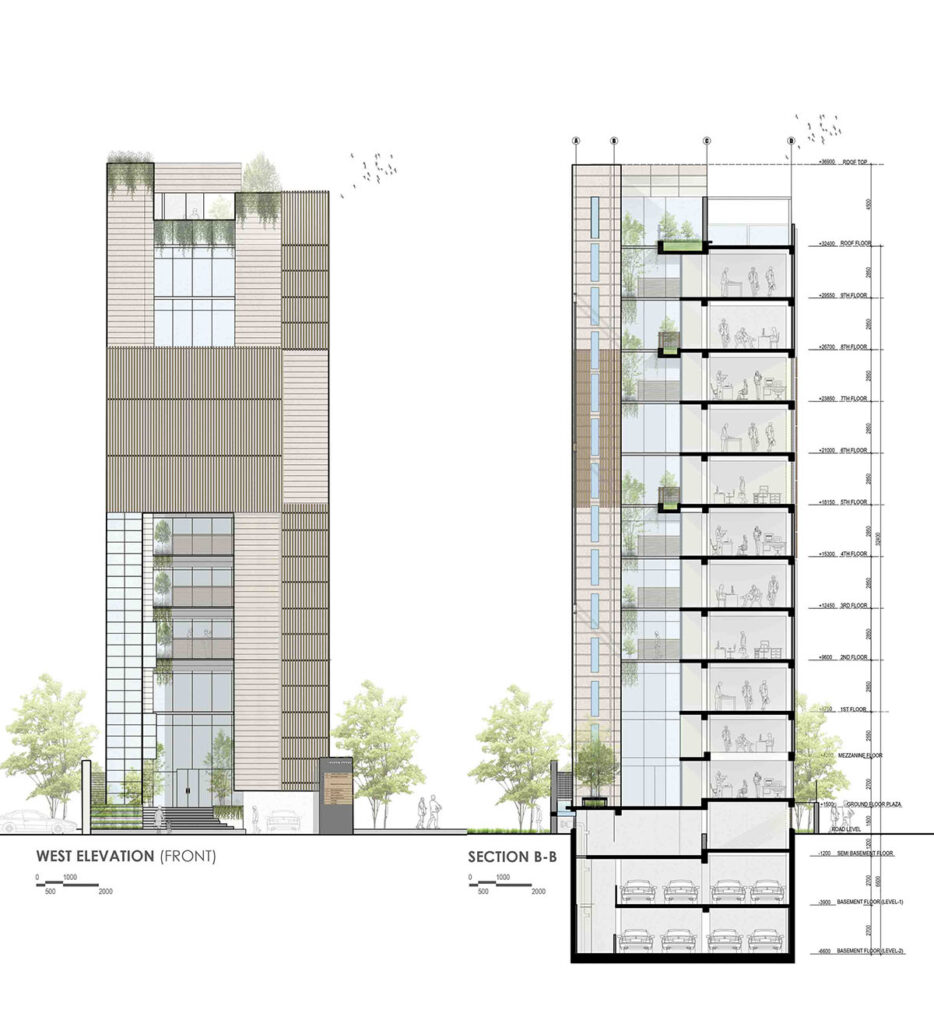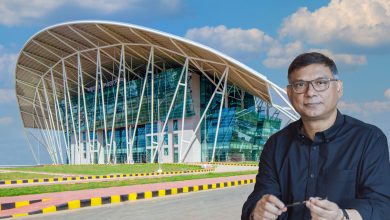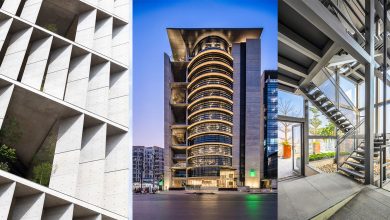As the project name suggests, the commercial building Urban Forest is a modern depiction of an estate epitomizing and embracing the flora and fauna, nature and the natural elements of the earth. Designed by In QUEST Design Studio, the building locates at the capital’s Banani busy urban area.
The 10 storied office building designed for the client Manama Developments Ltd, spans 2730 square-meter built area. The major concern of the design was the front façade of the building facing west. West is considered to be the worst option as the low angle sun generates extreme heat which is a major problem for a humid tropical country like Bangladesh. However, blocking the west façade completely to avoid the west-heat was not an ideal solution. The challenge of the project was, therefore, to decrease the west heat and reduce the cooling cost, and providing an energy efficient solution. The design team hence composed the west and south façades methodically with a blend of opaque, translucent and transparent surface, and sheathed with WPC (wood plastic composite) louvers in the openings and in the glazing surfaces. This façade treatment decreased heat absorption vastly keeping the interior cool, and allowed an ample amount of daylight to enter and to spill over the surrounding urban view. From architect Selim Altaf Biplob, architect Tamanna Sayeed and architect Khalid Bin Kabir, the design partners of the firm, the building louvers are implemented in a vertical position instead of horizontal position, as this orientation works better in deflecting the west-sunlight. Moreover, in a dusty climate like Bangladesh, vertical surfaces catch less dust, so the maintenance requirement of the louvers is also low. Further, the floating bridge from the sixth floor and above crafts a thermal mass that shields the direct west heat.
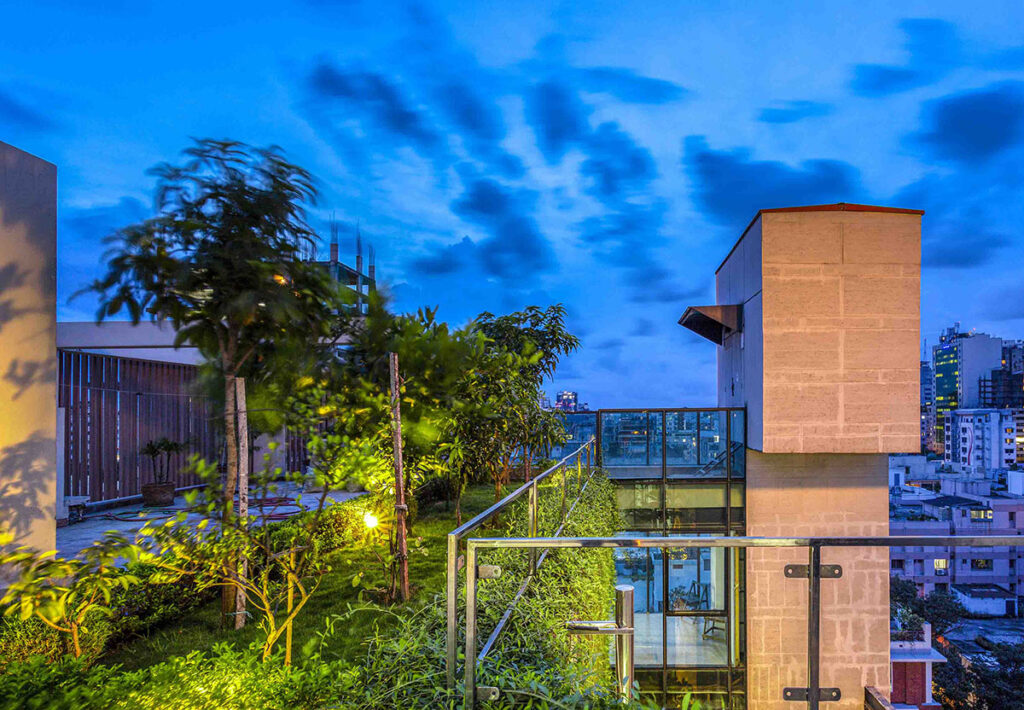
The building has an introvert design, consisting of a semi-internal courtyard creating an interactive urban pocket.
The inner court is a gracefully composed space of elements such as water feature and vegetation – is the heart of the building which is complemented by the floating gardens above from various floors. “The open court is part of the natural ventilation strategy, allowing cool air to flow through the place during hot summers”, explains the design team. “As the court is open to sky, it allows the warm air to travel to the top; thus avoiding the possibility of being trapped inside”. This court connects the building with the urban fabric making it an integral part of the city. The transition of the city-street to the building plaza to the inner court to the building interior is itself an experience for the users and the employees.
The choice of material in this building is vastly influenced by the climatic contemplations. Issues such as energy-efficiency, response to climate, maintenance-free, ecological sustainability, and thermal response were taken into account.
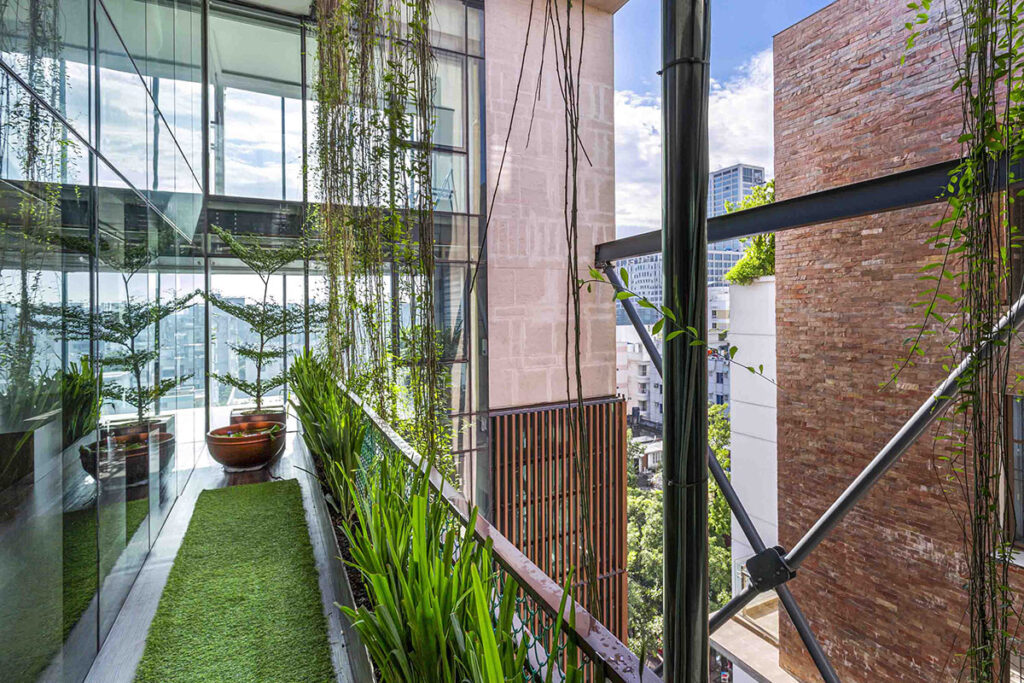
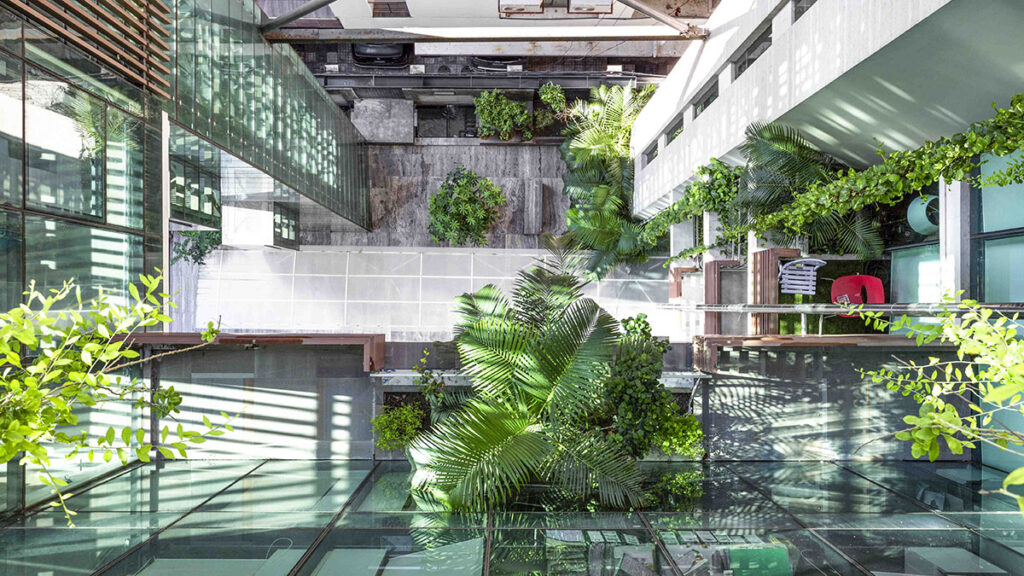
The solid façade is finished through unfired flexi clay cladding making it more environmentally friendly than typical plaster and paint finishes. This particular cladding is made of modified clay material and sand that is environmentally safe, recyclable non-toxic and fireproof.
The material has the same aesthetic and environmental quality as the traditional mud building.
The office community is surrounded by green trees and full of vitality. One can feel the green and nature from every part of the building. Numerous flowers and gigantic tropical trees in the territory invite birds and bees offering to nest in the thick foliage. “We wanted employees to come to work in a cheerful mood and can look up to enjoy the trees and bask in the sunshine. We tried to shape better life scenes in work and get subtle and delicate feelings and warmth. The integration of work, life, garden and culture and innovation can create a new way of humanistic work”, adds the design team.
Overall, Urban Forest works as a breathing ground for the user, visitors and local birds. It is a small oasis in the middle of a vast metropolis Dhaka.
The project was completed at the later part of 2018 and it is serving its function with highest client satisfaction ever since. The project was nominated as one of the two for “GREEN AsiARCH 2019 exhibition from Bangladesh” which was an international event where projects from ARCASIA member countries had participated.

Architect Profile
In QUEST design studio is a Dhaka based architectural firm established in 2017 by Selim Altaf Biplob, Tamanna Sayeed and Khalid Bin Kabir. The senior partners of In QUEST design studio – Selim Altaf Biplob and Tamanna Sayeed completed their graduation from Bangladesh University of Engineering and Technology (BUET) in 1997. Khalid Bin Kabir, the other partner of In QUEST, had also graduated from the same university in 2012. In this couple of years, the firm has delivered numerous successful projects and further aims to lift the creativity and design imagination to a new level.

